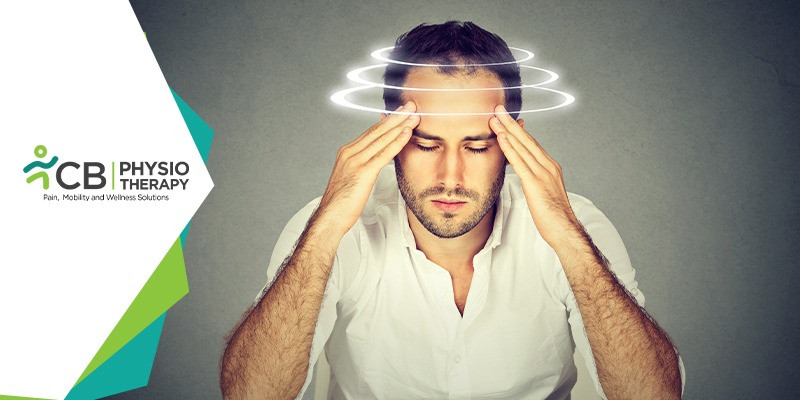Vertigo has nowadays become one of the most common reasons for adults to visit their doctors. The person suffering from vertigo usually feels as if the room is spinning, even may also feel an imbalance and visual disturbances. Vertigo is caused due to the dysfunction of the inner ear or cranial nerve dysfunction. Though it is not life-threatening but can affect a person's quality of life. An exercise-based physiotherapy program can be designed to reduce vertigo. A physiotherapist uses various exercise strategies to alleviate the patient's symptoms which allow them to return to normal function. In this blog, we have briefed up about vertigo and also have mentioned a few exercises which can be easily done at home.
Vertigo
Benign Paroxysmal Positional Vertigo (BPPV) is the most common type of vertigo, caused by the small crystal of calcium that loosens in the inner ear, these crystals travel into the semicircular canals, disturb the fluid, and create the sensations of movement. There are 2 types of BPPV Canalithiasis and Cupulolithiasis. Canalithiasis is in which the crystals are freely floating in the canal and Cupulolithiasis, is a condition in which the crystals get stuck to the cupula.
There are many other causes for dizziness like vestibular migraines, cervicogenic vertigo, vestibular neuritis, Meniere's disease, concussion, etc. The patient complains of dizziness while turning in the bed, lying on one side, getting out of bed, and looking up. Symptoms last for a few seconds, whereas a feeling of nausea or increased head pressure can last for hours.
Physiotherapy Treatment for BPPV
The physiotherapist examines the inner ear thoroughly with positional testing by putting the head in different positions and trying to elicit the symptoms of vertigo. Maneuvers are then used to treat the condition. These exercises can be easily performed by the patient at home:
Epley Maneuver
Epley maneuver is one of the most commonly used physiotherapy treatments for vertigo.
- Sit straight up in bed with the head back and legs outstretched.
- Turn the head to a 45-degree right.
- Quickly lie back with the head still tilted and hold the position for 30 seconds.
- Slowly turn the head 90 degrees to the left without lifting the neck. Hold this position for 30 seconds.
- Turn the head and body so that you are on your left side. Hold for 30 seconds.
- Slowly return to the starting sitting position.
- Epley maneuver can be done 3 times a day until dizziness subsides.
Foster Maneuver
- Kneel and look up at the ceiling.
- Slowing curls the body towards the knees and touching the head to the floor. Hold for 30 seconds.
- Turn the head in the direction of the ear and hold for 30 seconds.
- Swiftly raise the head to a 45-degree angle, keeping it in line with the back. Hold the position for 30 seconds.
- Keep the head turned to the affected side, and quickly raise it to a fully upright position. Slowly begin to stand.
- Take 20 minutes of rest interval in between the exercises.
Brandt-Daroff Exercise
- Begin by sitting upright on the edge of the bed.
- Quickly lie on the left side while turning your head to look up at the ceiling.
- Return to a seated position for 30 seconds.
- Repeat the same on the other side.
- Do 5 repetitions per side.
- Return to a seated position and wait for any dizziness to subside before standing, dizziness is normal after completing this exercise.
Gaze Stabilization
- Fix an object on the wall in front.
- The patient gazes at the object.
- Repeatedly move the head up and down or back-and-forth for several minutes.
Balance Exercises
- Walk on uneven ground.
- Walk-in a dark environment.
- Stand on a wobble board.
- Stand on one leg.
- Walk and turn.
- Bend forward and reach for an object while maintaining balance.
The direction of movement depends on the affected ear. Each exercise lasts for 3-5 minutes and is repeated 2-4 times. Symptoms may aggravate during the exercises but by the end, they subside. These exercises are designed to provoke mild symptoms so that the central nervous system gets habituated to the stimuli. The increase in symptoms should be temporary, for 15-20 minutes.

